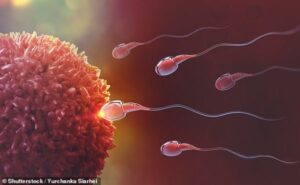Fallopian Tubes: Infertility Caused by Damaged or Blocked Fallopian Tubes
Do you want to know what Fallopian Tubes or Infertility Caused by Damaged or Blocked Fallopian Tubes are? Do you want to know the leading causes of it?
Well, this is what this article is all about. In this article, we will take an in-depth look at it. Now, if that sounds interesting to you, then let us begin.
Infertility Caused by Damaged or Blocked Fallopian Tubes
- Because the fallopian tube is where sperm fertilizes the woman’s egg, damaged or obstructed fallopian tubes are a significant cause of female infertility.
- Pelvic inflammatory illness, endometriosis, prior operations, ectopic pregnancy, or tubal ligation may cause tubal obstructions or damage.
- The majority of women with damaged or obstructed fallopian tubes have no symptoms.
- Suppose tubal damage or obstructions cannot be repaired with surgery or tubal cannulation (a procedure in which a doctor clears the blockage using a medical device). In that case, a woman may still conceive with in vitro fertilization (IVF).
How do damaged or blocked fallopian tubes cause infertility?
Damaged or obstructed fallopian tubes affect around 30% of women diagnosed with infertility. Tubal illness, tubal infertility, and tubal occlusion are used to describe this problem.
The ovaries and the uterus are connected by the fallopian tubes, which constitute a reproductive organ in a woman’s body.
When a woman ovulates, her eggs leave the ovaries and travel via the fallopian lines to the fallopian tubes. Sperm goes from the vaginal canal via the uterus to the fallopian tubes, fertilizing the egg by joining with it.
For pregnancy to occur, the resultant embryo must move from the fallopian tubes to the uterus after fertilization.
By interfering with the transport of sperm to the egg or the fertilized egg to the uterus, damaged or clogged fallopian tubes may prevent a woman from becoming pregnant.
What causes damaged or blocked fallopian tubes?
The fallopian tubes are readily injured or clogged due to their tiny size. The most prevalent cause of fallopian tube blockage or damage is infection-induced scarring on the tubes’ lining.
Aside from infection, which may occur for various reasons, tubes can become clogged or damaged as a result of illness or surgery. The most common causes of tubal occlusion are listed below.

Pelvic inflammatory disease (PID)
PID may develop when sexually transmitted diseases (STDs) or other illnesses are left untreated. It’s usually brought on by gonorrhea or chlamydia. PID causes inflammation surrounding the fallopian tubes, which may cause scar tissue to form and obstructions to create.
Endometriosis
Endometriosis is a condition in which tissue from a woman’s endometrium, the uterine lining, grows on other pelvic organs outside of the uterus. During menstruation, the endometrium is lost and expelled from a woman’s body in the form of menstrual flow.
The endometrial tissue that grows outside of the uterus, on the other hand, does not shed like normal tissue. This promotes inflammation and may result in scar tissue formation.
Surgery
Damaged or obstructed fallopian tubes might also be caused by previous procedures. Surgery for medical issues such as uterine fibroids or endometriosis, as well as other forms of abdominal surgery, may result in scarring that prevents an egg from traveling via the fallopian tubes.
Ectopic pregnancy
When a fertilized egg implants in the fallopian tubes rather than the uterus, it is called an ectopic pregnancy. The fertilized egg does not have enough space to develop since the fallopian tubes are tiny and narrow.
This may cause the fallopian tubes to burst, putting the woman’s life in jeopardy and rendering her infertile.

If a doctor detects an ectopic pregnancy before the fallopian tube ruptures, surgery to remove the fertilized egg may be done. Fallopian tube scarring and removal are both possible outcomes of surgery.
Tubal ligation
Tubal ligation is a procedure in which the ends of a woman’s fallopian tubes are cut or plugged to prevent future pregnancies. “Having your tubes tied” is a term used to describe this surgery. Tubal ligation may be reversed in certain circumstances, although it requires extra surgery.
Symptoms of damaged or blocked fallopian tubes
Unlike many other causes of infertility, Blocked fallopian tubes are seldom accompanied by symptoms. Many of the disorders that produce damaged or obstructed fallopian tubes, on the other hand, do create signs.
Endometriosis and PID, for example, may cause painful periods, intercourse discomfort, and severe bleeding during and between periods.
Infertility or difficulty conceiving might be the first indicator if a woman’s fallopian tubes are obstructed. A woman suffering from hydrosalpinx (fluid in the fallopian tube) may also have stomach discomfort and odd vaginal discharge.
Diagnosis
A hysterosalpingogram (HSG) test identifies tubal obstruction and damage. During an HSG procedure, a clinician injects a dye solution into the uterus to give visual contrast, then examines the uterus and fallopian tubes with an X-ray.
If a woman’s fallopian tubes are clogged, her doctor may conduct a laparoscopy, a minimally invasive surgery, to evaluate the problem.
Tubal illness therapy varies based on the kind of injury or obstruction. Surgery to remove the block may be necessary for certain circumstances.
Surgery, on the other hand, is not always helpful. If the damage or blockage is irreversible, a woman may still conceive with IVF.
